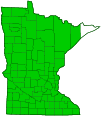Canadian milkvetch
(Astragalus canadensis var. canadensis)
Conservation • Wetland • Description • Habitat • Ecology • Use • Distribution • Taxonomy
Description |
||
Canadian milkvetch is an erect, usually robust, perennial forb rising on one to a few stems from a spreading underground stem (rhizome). It can be 12″ to 60″ tall, though in Minnesota it is usually no more than 40″ in height. The stems are usually erect to ascending, but sometimes recline on the ground with only the tips ascending (decumbent). The are hollow, often branched toward the top, and covered with appressed, pick-shaped (malpighian) hairs. The hairs are parallel to the stem. The leaves are alternate and 4″ to 8¾″ long, sometimes longer. They are pinnately divided into 13 to 35 leaflets. Each leaf has a terminal leaflet and an odd total number of leaflets. At the base of each leaf stalk there is a lance-shaped to triangular, ⅛″ to 11 ⁄16″ long, leaf-like appendage (stipule) at the base of each leaf stalk. Each leaflet is are oblong or elliptic, ⅝″ to 1½″ long, and ⅛″ to ⅝″ wide. They are rounded or notched at the tip with a minute, short, sharp point at the tip. The upper surface is hairless or almost hairless. The lower surface is covered with malpighian hairs. The margins are untoothed. The inflorescence is a dense, unbranched, whorled cluster (raceme) of 30 to 70 flowers rising on a 2″ to 8″ long stalk from the upper leaf axils. It is stiff, upright, and 1″ to 6″ long, 1″ or 2″ longer than the subtending leaf. It is and held above the leaves. The flowers are widely spreading to somewhat bent backward. Each flower is ½″ to ⅝″ long. There are 5 sepals, 5 petals, and 10 stamens. The sepals are fused for most of their length into a ⅛″ to 5 ⁄16″ long, cylinder-shaped tube (calyx), then separated into 5 lobes that are up to half as long as the calyx tube. The calyx is less than half as long as the corolla. The petals are creamy-white to greenish-white, often with a yellowish tinge. They form a butterfly-like corolla, as is typical of plants in the Pea family. They are organized into a broad banner petal at the top, two lateral wing petals, and between the wings two petals fused into a keel. The banner is notched at the tip. The wings and banner are equal in length. The fruit is an inflated, cylinder-shaped, 5 ⁄16″ to ¾″ long, ⅛″ to ¼″ wide seed pod. The pod is hairless and is not grooved. It is held erect or spreading, not drooping. |
||
Height |
||
12″ to 40″ |
||
Flower Color |
||
Greenish-white |
||
Similar Species |
||
Habitat |
||
Dry to moderate moisture. Prairies, thickets, woodland edges and openings. Full to partial sun. |
||
Ecology |
||
Flowering |
||
July to August |
||
Pests and Diseases |
||
|
||
Use |
||
|
||
Distribution |
||||
|
Sources |
|||
| 3/21/2023 | ||||
Nativity |
||||
Native |
||||
Occurrence |
||||
Common |
||||
Taxonomy |
|||
| Kingdom | Plantae (Plants) | ||
| Division | Tracheophyta (Vascular Plants) | ||
| Subdivision | Spermatophytina (Seed Plants) | ||
| Class | Magnoliopsida (Dicots) | ||
Order |
Fabales (Legumes, Milkworts, and Allies) | ||
Family |
Fabaceae (Legumes) | ||
| Subfamily | Faboideae | ||
| Tribe | Galegeae (milkvetches, locoweeds, and allies) | ||
| Subtribe | Astragalinae | ||
| Genus | Astragalus (milkvetches) | ||
| Species | Astragalus canadensis (Canadian milkvetch) | ||
There are three varieties of Canadian milkvetch. Only var. canadensis occurs in Minnesota. |
|||
Subordinate Taxa |
|||
Synonyms |
|||
Astragalus canadensis var. carolinianus Astragalus canadensis var. longilobus Astragalus carolinianus Astragalus halei |
|||
Common Names |
|||
Canada milk vetch Canadian milk-vetch Canadian milkvetch |
|||
Glossary
Axil
The upper angle where the leaf stalk meets the stem.
Calyx
The group of outer floral leaves (sepals) below the petals, occasionally forming a tube.
Corolla
A collective name for all of the petals of a flower.
Decumbent
Reclining on the ground but with the tips ascending.
Malpighian hairs
Hairs that are widely forked, attached at the middle, and tapered at each forked end; pick-shaped hairs.
Pinnate
On a compound leaf, having the leaflets arranged on opposite sides of a common stalk. On a bryophyte, having branches evenly arranged on opposite sides of a stem.
Raceme
An unbranched, elongated inflorescence with stalked flowers. The flowers mature from the bottom up.
Rhizome
A horizontal, usually underground stem. It serves as a reproductive structure, producing roots below and shoots above at the nodes.
Sepal
An outer floral leaf, usually green but sometimes colored, at the base of a flower.
Stipule
A small, leaf-like, scale-like, glandular, or rarely spiny appendage found at the base of a leaf stalk, usually occurring in pairs and usually dropping soon.
Visitor Photos |
|||||
Share your photo of this plant. |
|||||
| This button not working for you? Simply email us at info@MinnesotaSeasons.com. Attach one or more photos and, if you like, a caption. |
|||||
|
|||||
MinnesotaSeasons.com Photos |
|||||
Plant |
|||||
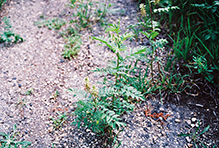 |
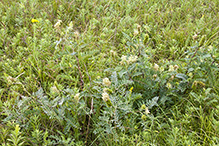 |
||||
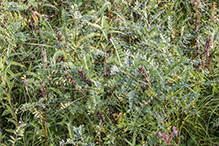 |
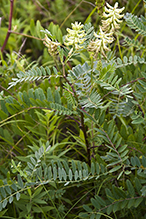 |
||||
Inflorescence |
|||||
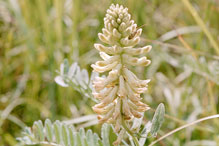 |
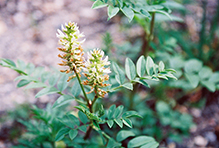 |
||||
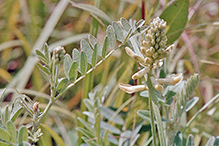 |
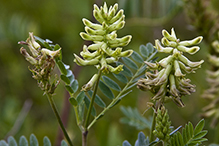 |
||||
Leaf |
|||||
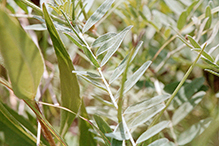 |
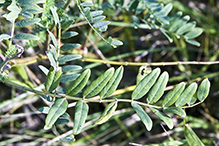 |
||||
Leaves |
|||||
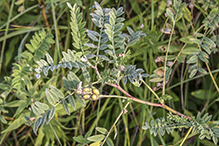 |
|||||
Infructescence |
|||||
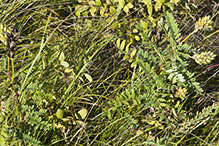 |
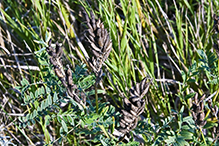 |
||||
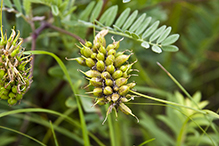 |
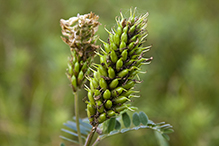 |
||||
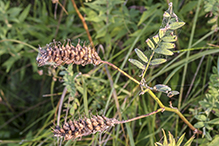 |
|||||

Slideshows |
||

Visitor Videos |
|||
Share your video of this plant. |
|||
| This button not working for you? Simply email us at info@MinnesotaSeasons.com. Attach a video, a YouTube link, or a cloud storage link. |
|||
Other Videos |
|||

Visitor Sightings |
|||||
Report a sighting of this plant. |
|||||
| This button not working for you? Simply email us at info@MinnesotaSeasons.com. Be sure to include a location. |
|||||
|
|||||
MinnesotaSeasons.com Sightings |
|||||
Blazing Star Prairie Addition Preserve, South Unit Carpenter St. Croix Valley Nature Center Carver Highlands WMA, South Unit Felton Prairie SNA, Bicentennial Unit Kellogg Weaver Dunes SNA, Kellogg Weaver Unit Margherita Preserve-Audubon Prairie Mound Spring Prairie SNA, North Unit Northern Tallgrass Prairie NWR, Rengstorf Unit Pankratz Memorial Prairie, North Unit Pembina Trail Preserve SNA, Crookston Prairie Unit |
|||||

|
Created: Last Updated: © MinnesotaSeasons.com. All rights reserved. |
